What’s giving the Ferrari 458 a leg up as a collectible?

There’s just something about the Ferrari 458. Short of the Porsche 911’s near-eternal appeal, it’s hard to think of a modern supercar that has exerted such staying power in the collective consciousness of enthusiasts. Even more so when you consider how relatively “mass-produced” the 458 was. Often, today’s latest and greatest exotics become yesterday’s news pretty quickly, and have the popularity shelf-life of a carbon-fiber carton of milk.
Not the 458, though. It gets more attention than both the newer, faster, more capable 488 that succeeded it and its predecessor, the modern classic that is the F430. Seems a bit odd, no? What makes the 458 Italia worthy of the spotlight?
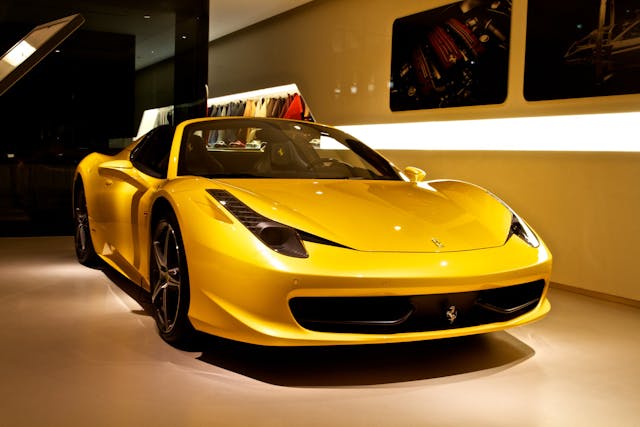
“It’s the end of an era, and anytime in the Ferrari sphere where there is something experientially superior that is discontinued, you see the market respond accordingly,” explained Derek Tam-Scott, Issimi’s Sales and Marketing Principal and Hagerty Insider contributor. When the 458 exited production for the 2015 model year, so did Ferrari’s naturally aspirated V-8, a jeweled, ripsaw heart that could trace its spiritual lineage back to 1973, when the (relatively) dowdy 308 GT4 debuted Maranello’s first production V-8.
This is the kind of scenario where numbers only begin to tell the story. From March 2021 to June 2023, the 458 Italia saw a 20 percent growth in average value. Meanwhile, the 488 GTB trailed, climbing 16 percent in the same timeframe. The slightly stronger value trajectory coincides with a similar edge in demographic interest for the 458. Condition #2 (“Excellent”) 458 Italias currently sit at $243,000. The 488 isn’t yet in the Hagerty Price Guide, but a similarly excellent condition one will trade between $249,000-292,000. Like most collector superstars-in-waiting, it’s more important to contextualize such anodyne numbers with collector enthusiasm and an understanding of how the car’s lusty attributes pair with up-and-coming buyers.
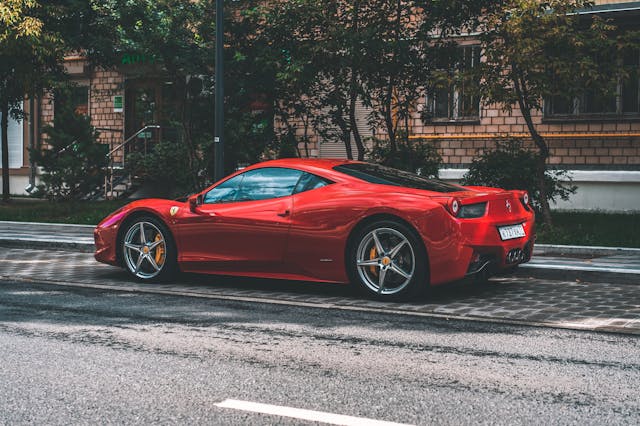
Now, Instagram numbers are hardly an exact science, but they’re still a clear gauge of popularity and they indicate both staying power and appreciation for Ferrari’s bread-and-butter mid-engine model of the 2010s. A quick look at tags on the site shows roughly 2.5 million posts associated with the Ferrari 458; the 488 that replaced it musters roughly half that, with the preceding F430 mustering less than a million associated posts.
Looking back to the kinds of factors that preceded hashtags, the energy swirling around the 458 appears anchored in its status as a pinnacle and a turning point. “The collector market broadly—and this certainly applies to Ferrari collectors—responds to a sense of loss,” Tam-Scott continues. “And, I think there is a sense of loss around naturally aspirated flat-plane V-8s, because they are so singular and it’s one of the defining characteristics of a particular genre of Ferrari experience.”
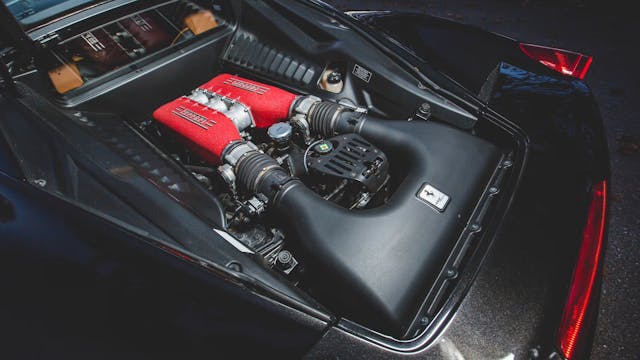
The 458 really is the apogee of Ferrari’s free-breathing eights for a cluster of reasons. Sensationally, the 8000-rpm 4.5-liter screamer was as scintillating an automotive experience as you’ll find—but technologically, it was a trans-dimensional warp away from the F430. In the mid-engine family, the 458 was the first to carry direct injection, tech pioneered in the family tree by the then-new Ferrari California.
Also from the California came the seven-speed dual-clutch gearbox, an incalculable upgrade over Ferrari’s longstanding “F1” manumatic single-clutch transmission that first arrived in the F355. This new DCT set the new “production” supercar standard, managing the 458’s 562 hp for a still-blistering 3.4-second 0-60 mph scramble.
Even 13 years on from the first 458, its performance is still up there with newer supercars. “There are some people who care most about raw numbers and performance, but the fact of the matter is that even in naturally aspirated form, that car is plenty fast for anything an average Ferrari owner will do with the car,” says Tam-Scott. “It’s a genuinely contemporary car compared to previous generations.”
And not just from a performance perspective, either. Current Ferraris of all flavors owe their aesthetic threads to the 458, inside and out. Thematic touches like the combo ana-digi gauge cluster, flat-bottom steering wheel with integrated controls, and even vent design carry over to today.
Also landmark was the 458 Italia’s expansion of factory customization. While Ferrari’s suite of specialty paintwork and bespoke upholstery emerged toward the end of the 1980s, the 458 made it significantly easier to create your ideal car. “It’s when you [started to] see people come in, sit down, and commission hardcore customized builds,” explained Ferrari expert and Hagerty Price Guide contributor Alex Alghrim. “All of a sudden, now you have cars in off colors, you might have an interior that’s a little wild, or you may have a stitching deviation that’s different.”
The original order form began to seriously separate “base” 458s from heavier specs, offering buyers hardware like sport seats and front nose-lift in addition to the standard special-order paints. “The 458 is also when you start seeing cars dripped with carbon fiber,” Alghrim adds.
Those readers who prioritize driving over “looking” might scoff at the superficiality, but this clear shift in individualization has created a not-insignificant market spread. “The buyers that are coming in and looking for a 458 to round out their collection, they’re already used to the 488, the F8, and the 812’s ability to customize,” Alghrim says. “They’re going to be going for cars with more option penetration on them, and you have a lot of variation between the cars you’re getting.”
It’s this combination of classic, high-revving natural aspiration and observable modernity that puts the 458 Italia in a league of its own. The 3.9-liter twin-turbo V-8 in the 488 GTB—a car best considered a comprehensive update to the 458—is far more powerful and advanced than the 458’s heart, but enthusiasts and collectors just weren’t as enamored. “They did a good job trying to make sure the turbocharged cars feel linear and responsive, and while Ferrari does a better job than other manufacturers, it just doesn’t have the same sizzle experientially,” says Tam-Scott. “You’re giving up a lot to gain very little.”
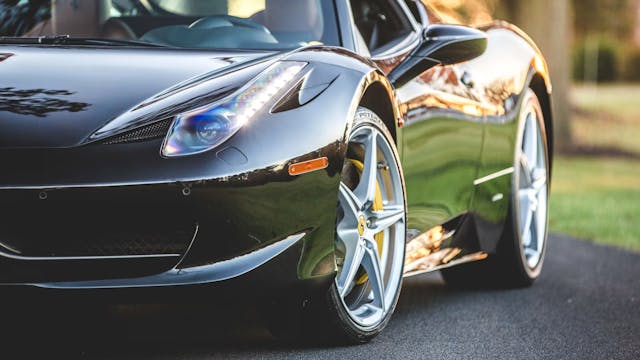
Still, performance is likely part of the equation with a 458 purchase, as it’s far, far more capable than its immediate predecessors and has little problem keeping up with modern supercar traffic. “The people who buy these cars want performance but also want experience,” explains Tam-Scott. “If someone says that performance isn’t really a big factor at all, they’d be buying a [Ferrari with gated manual] instead.”
This deadly combination makes the 458 Italia a bit of a demarcation line in the Ferrari timeline. For those who have experienced modern supercar performance but still want something with heart, most wouldn’t be happy going further back. “It’s the only car you could choose if you’re a certain type of Ferrari buyer,” says Tam-Scott. “It’s the type of buyer—and this might sound insulting—of the child who has grown up. The type of buyer who wants a mid-engined, wedge-shaped car with a center-piece-y engine that is still vaguely contemporary.” There really isn’t anything else like the 458’s shriek. “I can’t stress enough how important sound is for people buying a flat-plane V-8 Ferrari, and I suspect this decision is made on that alone.”
Our Ferraristi readers have surely noticed by now that we’re deliberately sticking to the “base” 458 Italia and 488 GTB, leaving out spicier limited-production models like the 458 Speciale and 488 Pista. We ask Tam-Scott if he’s seeing movement of standard 458 Italias into major collections, Ferrari-centric or otherwise. “In our business, the really heavy collectors have the higher trim cars, so most likely the buyer of a 458 Italia is going to be someone who doesn’t have too many Ferraris,” he says. “It might be the starting place for someone who can afford it, and it’s kind of the best place to start.”
Regardless if the 458 is their first or their fifteenth, most are being purchased explicitly to drive, not to display, according to Alghrim. “You have two camps of buyers with the 458: The first are buyers who are willing to pay a little above what the market is for a car that has a little more miles that has been well-maintained,” he says. “Then you have buyers who are willing to break the bank for low-mileage, heavy-option cars.”
It seems like most fall into the former. “I have a good number of clients that call in asking for a driver-condition 458. That doesn’t happen with the 488 or the rest of the models,” Alghrim laughs. “It’s a car that people want to drive. Customers are willing to buy a car with 30,000 miles on it and upwards because they trust the car and want to drive it.” That’s all the endorsement the 458 needs.

***
Check out the Hagerty Media homepage so you don’t miss a single story, or better yet, bookmark it. To get our best stories delivered right to your inbox, subscribe to our newsletters.
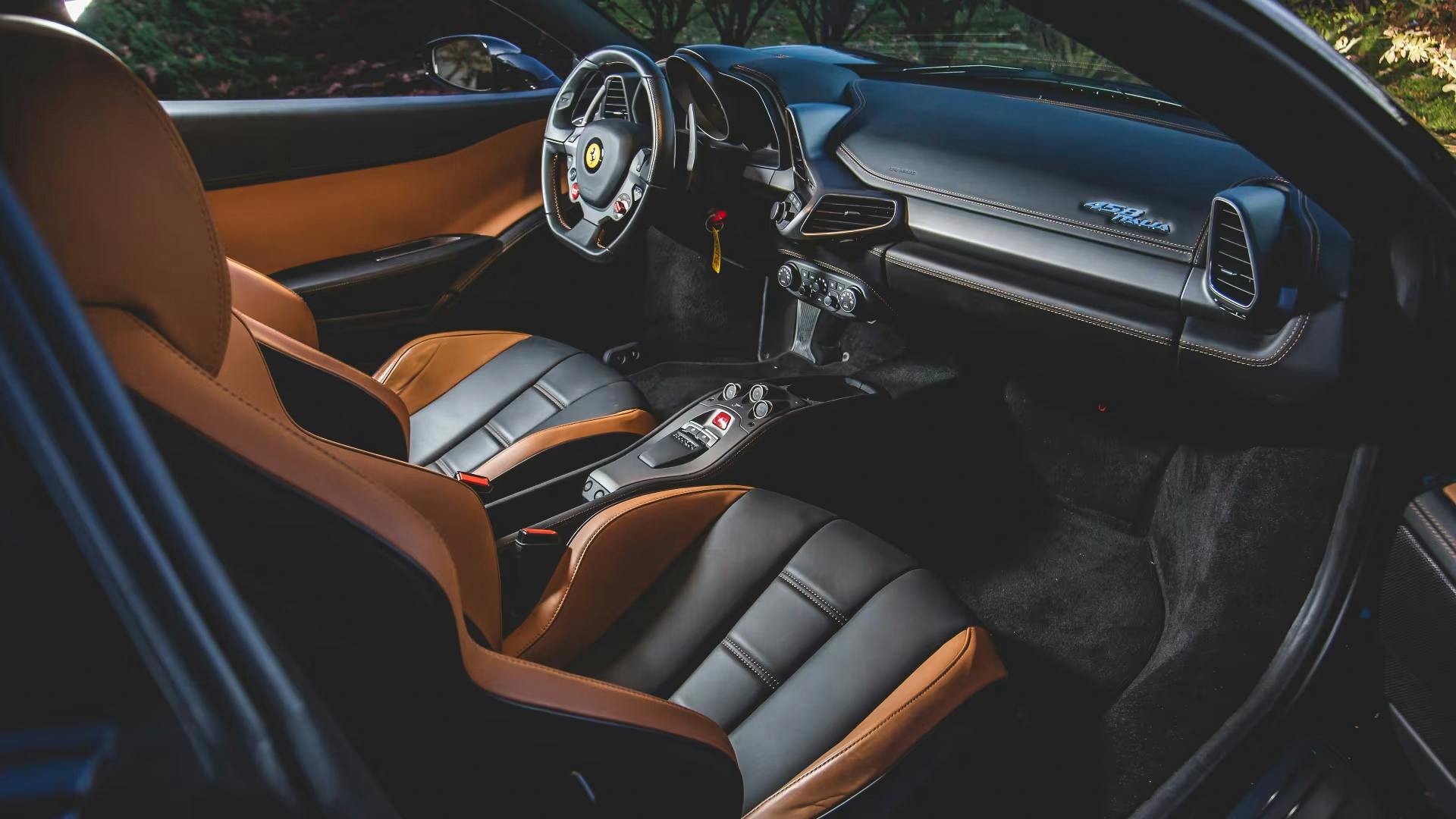
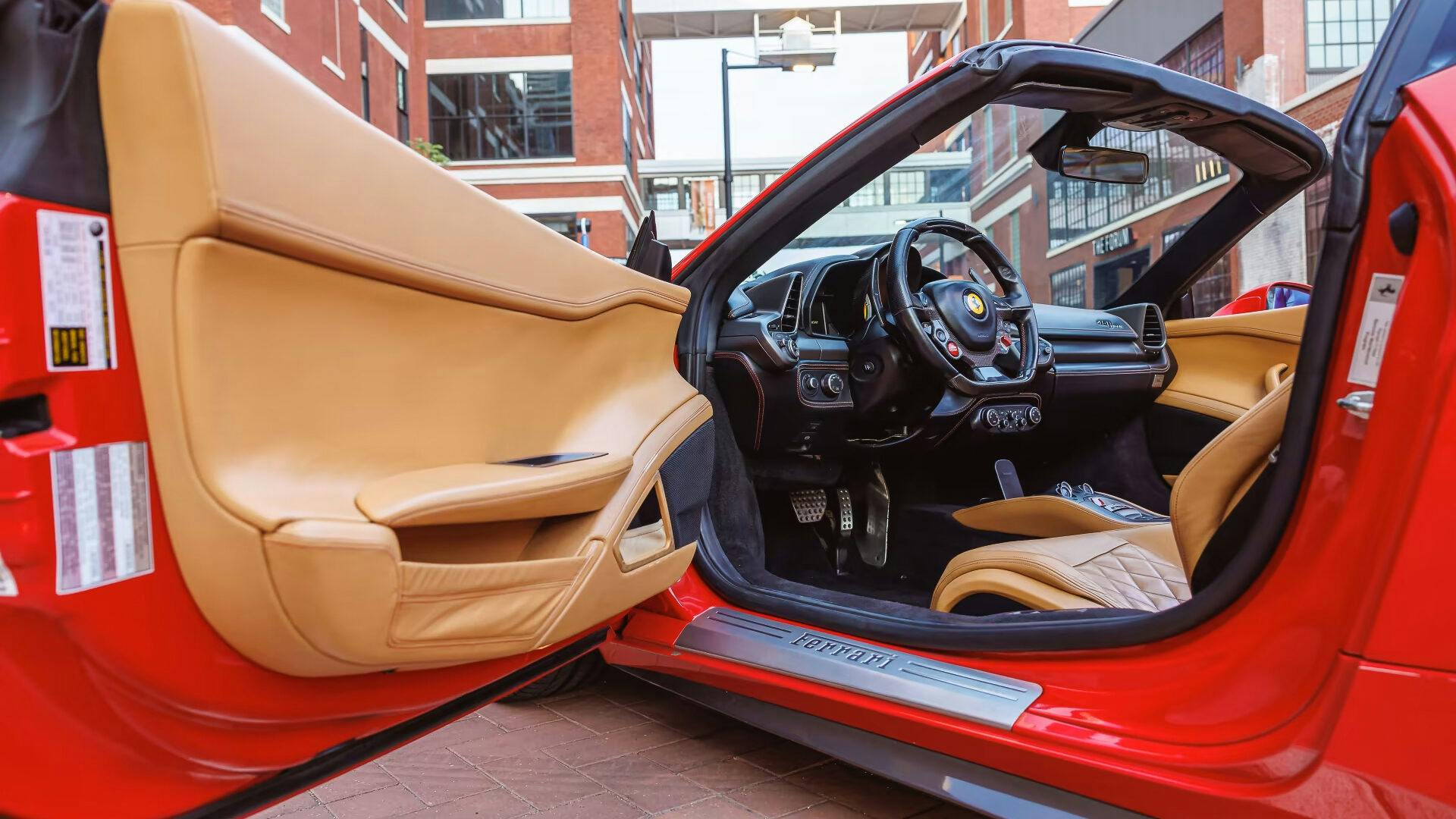


It is the last of the NA cars and with more and more turbo cars it will stand out. Same for the earlier last Manual cars. They will be looked for as people often will pay more for what they can no longer buy.
There has been for a long time and will continue to be “the last of” cars. These “last of” cars will always hold greater value in the eyes of those who lived during those “good old days” and lament the loss. Interestingly, the 488 represents both a loss of and a last of technology. It’s last of the normally-aspirated Ferrari V8 seems to overshadow its loss of a manual transmission. Does this represent the newer demographic putting less concern on the loss of the manual because it isn’t as culturally significant as it is to the generation before? If EVs replace ICE vehicles, will the ICE vehicles that deliver the best sensory combustion experience reach the highest values? I guess we’ll have to see.
Have a 2011 458 Italia with 2,606 miles on it. I’m the second owner. Its climate controlled garages kept on a lift covered. I drive to once month for maintenance reasons. Takes all my effort not to just forget it and drive it Dailey hard. It’s just a miracle machine.
I purchased my 2012 458 Spider with 4500 miles 2 years ago. I’ve since put 7000 on it and she’s running better than ever before. Drive it and don’t look back (except to see the 911s).
Have a 2011 458 Italia with 2,606 miles on it. I’m the second owner. It’s climate controlled garage kept on a lift & covered. I drive it once month for maintenance reasons. Takes all my effort not to just forget it and drive it everyday hard. It’s just a miracle machine.
My absolute favorite Ferrari. While many will out perform it, I’m drawn to is for its simplicity of design. I have a bad habit of buying cars just for their aesthetics, design and color, sometimes never test driving them before purchase. C7 and C8 Corvettes, no way, designs too busy. After owning a 308 GTSQV for 17 years and now a 355 spider for 17 years plus, my sights were trained on the 458. I actually got close but when I was checking one out, I discovered the damn “sticky paint” that was a curse on my 355 and I said to myself “not again.” Anyway, now the cars value is climbing and out of this marginal Ferrari owner’s reach. It seems I have something in common with car enthusiasts, we all like the same cars. Whether a 458 Ferrari, 65 Impala, 70 Monte Carlo, 66 Toronado, 67 El Dorado, 63-65 Riviera, buyers are driving the market beyond my reach. Looks like I will just live with my 355 Spider until I can’t get in it anymore but I can revel in it being a “3 pedal.” Still, I looked for 2 years for a 355 GTS before giving up and buying a Spider. That surrender likely cost me a 100 grand. I just can’t win.
By “sticky paint,” I’m guessing you are referring to the interior plastics whose coating went sappy after a number of years. I’m also guessing you probably remedied that by now, but on a driver F355, I would opt for the after-market approach that is nearly indistinguishable from the original part without the cost of replacing OEM parts and the inevitability that even the replacement parts will one day once again have the problem. Since the F355 doesn’t have the rarity of the old Ferraris that demand to be as original as possible, I think the after-market fix would actually be considered a more desirable solution.
I saw one of these at a show yesterday. Pretty car, to be sure, but at no moment in looking it over did my mind say, “this is a classic collectible”. Different strokes, I guess.
These aren’t “classic collectible” yet. These a future classics.🙂 As of now, they are merely collectible.😉
I have a 2010 458 with just over 21k miles in Rosso Corsa Red. Non-car people ask if it’s new, enthusiasts often walk up to me for conversations in a line of my buddies with much more expensive cars. It sounds amazing, drives like a dream, turns heads, it’s one of those rare perfect storms.
The 458 was an end of an era. Not surprised it has a big following.
Chevy should have copied this design for the Corvette.
I’m on my 2nd ITALIA, first was a 10′ put 11K miles on it in a year and half, sold it in March 21′ with 37K miles and really regretted it..went to a 355 GTS for a while, but then wanted an ITALIA again and finally found a spec similar to my first one but a 12′ i bought it with 32K miles in Nov of 22′ and now almost a year later i’m at 41K miles…Very reliable cars that love to be driven!!!